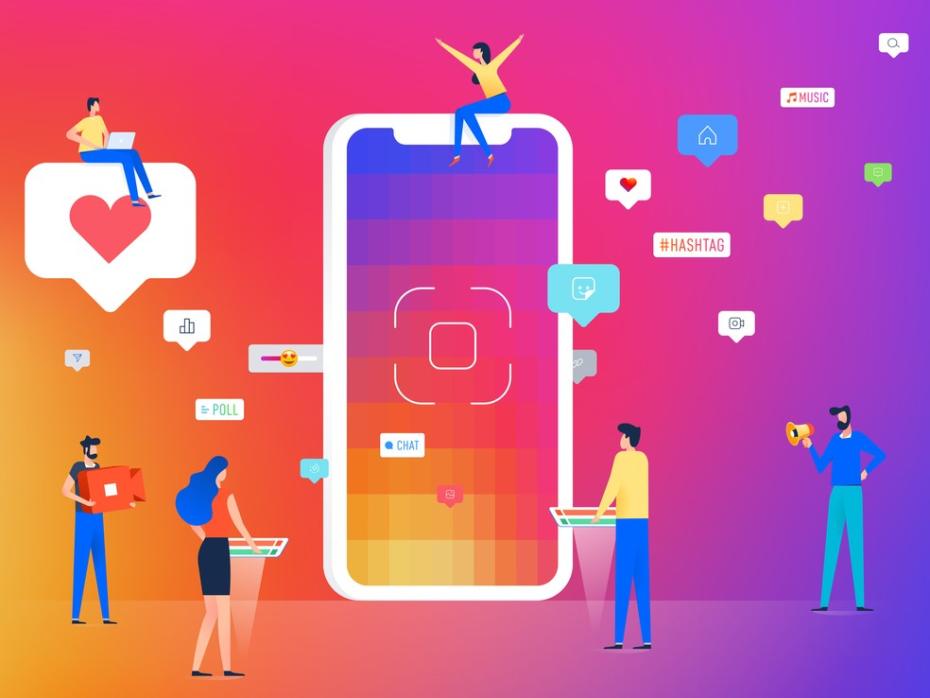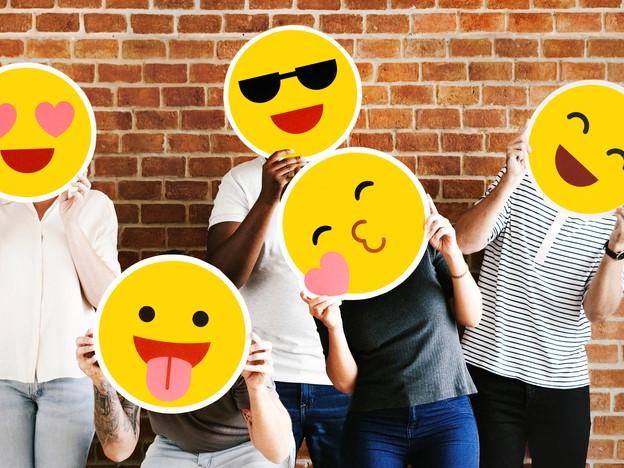Today’s students have grown up with social media. Ninety-eight per cent of Gen Z, born between 1997 and 2012, use it, according to Statista, and this has far-reaching consequences – good and bad. Social media has shaped the way we communicate, learn and consume information. There are concerns that its bite-sized, instantly gratifying content shortens attention spans. But while terms such as “doom-“ and “zombie-scrolling” paint a bleak picture, social media also presents opportunities. University educators can borrow social platforms’ techniques to boost student engagement, build online learning communities and equip learners with key transferable skills. And it’s not just students who can benefit. Platforms such as LinkedIn have become go-to tools for professional profile-building, networking and research promotion. Read about all of the above and more in this collection that explores the ways in which social media is reshaping higher education teaching and research.
Teaching the TikTok generation
Nicknamed the “TikTok generation”, Gen Z now makes up the largest share of university students. The prevalence of TikTok, Instagram and other social media platforms raises questions about the relevance and effectiveness of traditional approaches to teaching. Some warn of “popcorn brain”, a term coined by David Levy at the University of Washington to describe scattered thinking and shortened attention spans. But others defend students, pointing out there is no decline in social and learning skills but a need for an overhaul of communication and engagement styles – and that university teaching must evolve in response. The success of social media offers valuable lessons for lecturers, as these resources explain.
Engaging and influencing learners in the digital age of higher education: Educators and influencers share a common goal: engagement. So, what strategies can university teachers take from social media platforms that have mastered the art of audience capture? Riley A. Scott of the University of Southern Queensland and Jaimee Stuart of the United Nations University Institute in Macau provide some answers.
The scroll, the soundbite and the seminar: where media habits meet teaching: Students are raised in a world of algorithms, scrolls and screens. This means educators have to meet them on their terms: visually, aurally and interactively. Cayce Myers of Virginia Tech explains.
To combat ‘zombie scrolling’, integrate social media into your teaching: Transform Gen Z students from mindless scrollers to mindful scholars with this guide by Daniella Sieukaran of Dalhousie University to maximising the features of each social media platform in university teaching and learning.
Promoting learning with TikTok: 10 tips for engaging students: Leverage TikTok for learning at the university level by using pop culture, investing time in production and encouraging discussions, writes Washington State University’s Chris Clarke.
What I learned from spending three years researching TikTok: Far from being an attention span wasteland, the popular social media platform has great instructional potential for engaged and experimental academics, says Elizabeth Losh of William & Mary.
How social media can shape pedagogy
Social media can be a powerful teaching tool. Learn how lecturers can use popular platforms like Snapchat and Instagram to deepen student engagement and understanding of course material – borrowing from their successes in capturing and holding attention to using them to bridge theory with practice.
Harness the power of the cliffhanger to hook Gen Z’s scrolling minds: Learn from Gen Z’s social media use to engage their attention. Keep it bite-sized and high-impact – and leave them wanting more. Read advice from Tasnim Mustafa and Mariam Shadan of Dubai Medical University.
Transform digital pedagogy with social media: In order to ready the classroom for the digital age, integrate social media platforms into your teaching. Mehmet Demir from the University of Birmingham explains how to do it.
Using knowledge graphs to integrate social media into curricula: Knowledge graph-based tools can support group learning online and help educators bring useful links with social media into their courses. Learn from Fouad Zablith at the American University of Beirut.
Building online communities
Learning is an inherently social process and universities should be places that foster connection. Social media opens a host of opportunities to share knowledge, ideas and interests. These resources offer tips on using social media to build digital communities that encourage knowledge sharing, spark ideas and support student development.
Using social media to connect cohorts: A digital poster competition that encouraged comments on social media can spark conversations between under- and postgraduate students. Sam Perry, Robert Clarke and Lucy Mannie from the University of Southampton explain how it works.
The power of positivity: how a simple question went viral: The viral success of a social media post offers insights on how universities can use simple, authentic and emotionally resonant content to drive engagement and strengthen community, write Andrew Lam and Riley Phillips from the University of North Carolina at Chapel Hill.
Fake news, educated views and how-tos: social media for teaching and research: Terese Bird from the University of Leicester shares her ideas on how to use some of the most popular social media platforms to support your teaching and research.
Stepping stones to milestones: tap into micro-moments for alumni engagement: To connect effectively with alumni, bite-sized social media content must mirror the complexity of the lives it touches, writes Florence Neo from Singapore Management University.
What social media can teach lecturers about student engagement: Apply insights from how social media captures attention to help students stay focused in class and motivated to learn. Natalie K. D. Seedan from The University of the West Indies explains how.
Transferable social media skills
Social media can undermine learning and research through the spread of fake news, misinformation and the well-documented “echo chamber” effect. But platforms like Facebook, Instagram and YouTube also offer opportunities to teach critical thinking, source analysis and digital literacy. These resources explain how to help students question and evaluate online content, identify credible sources and share their own work effectively.
Fighting falsehoods at the speed of the scroll: With students subjected to a steady stream of memes and manipulated narratives, teaching media literacy isn’t something university educators should do; it’s something they must do. Cayce Myers from Virginia Tech offers advice for a misinformation age.
Teaching students how to spot scientific misinformation: Educators play a vital role in equipping students with the tools to critically evaluate headlines, interpret data responsibly and assess research methodologies. Read strategies from Bradford Vivian at Penn State College of the Liberal Arts on how to help students develop these skills.
Students aren’t giving up social media, so teach them how to question it: Whatever our own opinions on social media, we must educate our students about locating bias and reading their preferred platforms critically, says Stone Meredith from Colorado State University Global.
Tackling ‘fake news’ in online education: Higher education remains awash with claims and theories that are backed by little evidence. Here, Celia Popovic from York University and Fiona Smart from Edinburgh Napier University debunk some of the more common “fake news” myths in relation to teaching and look at how to apply this knowledge in online courses.
Research insights from social platforms
Via social media and digital tools, academic researchers now have access to a breadth of data, information, participants and collaborators that previous generations could have only dreamed of. Discover insights on how to use social tools to generate and share knowledge while maintaining academic credibility.
How I use social media as a research tool: Drawing from her autoethnographic experiences, Bhawana Shrestha of Xi’an Jiaotong-Liverpool University discusses how she uses social media platforms to deepen collaboration, enrich methodology and widen participation in research.
How to preserve academic credibility when engaging with social media: As political expression on social media can harm public perception of scientists, strategies such as sharing research, separating personal and professional identities and engaging objectively are ways that academics can use it effectively while preserving credibility, write contributors from the University of Bath, WZB Berlin Social Science Center and Imperial College London.
AcademiaTok: how to inspire Generation Z with academic research: Explaining research in a short social media video is a major green flag for the Covid-19 generation. Here’s how to use existing resources to hit TikTok and Instagram, from Lina Filippidi at the London School of Economics and Political Science.
Social media as a promotional tool
An online presence is key to promoting yourself and your work as an academic. Strategic use of platforms such as LinkedIn or Bluesky can support academic career progression, helping to broadcast research findings to new audiences, share published scholarship and build professional networks. Learn how.
Building your research profile via social media, with a focus on LinkedIn: A guide to creating effective researcher profiles on social media, with practical tips for using LinkedIn by academic career coach Tjitske Dijkstra.
Maximise your research impact with these seven LinkedIn tips: LinkedIn works as a powerful tool for academics who want to share their research, yet self-promotion can be daunting. Here are seven tips from academics at the University of Bristol to engage with other academics on the platform and define your brand.
LinkedIn is becoming academia’s key tool for career progression: For students and academics alike, it’s harder to ignore LinkedIn’s combination of networking and self-promotional opportunities, writes Arden University’s Gillian McCurdy.
How to start an academic YouTube channel: tips from a psychology YouTuber: YouTube is a wide-open opportunity for university teachers and researchers to share their knowledge with a wider audience, says Dennis Relojo-Howell from the University of Edinburgh.
Thank you to all the academics and higher education professionals who contributed their professional advice on this wide-ranging topic.
If you would like advice and insight from academics and university staff delivered direct to your inbox each week, sign up for the Campus newsletter.




comment